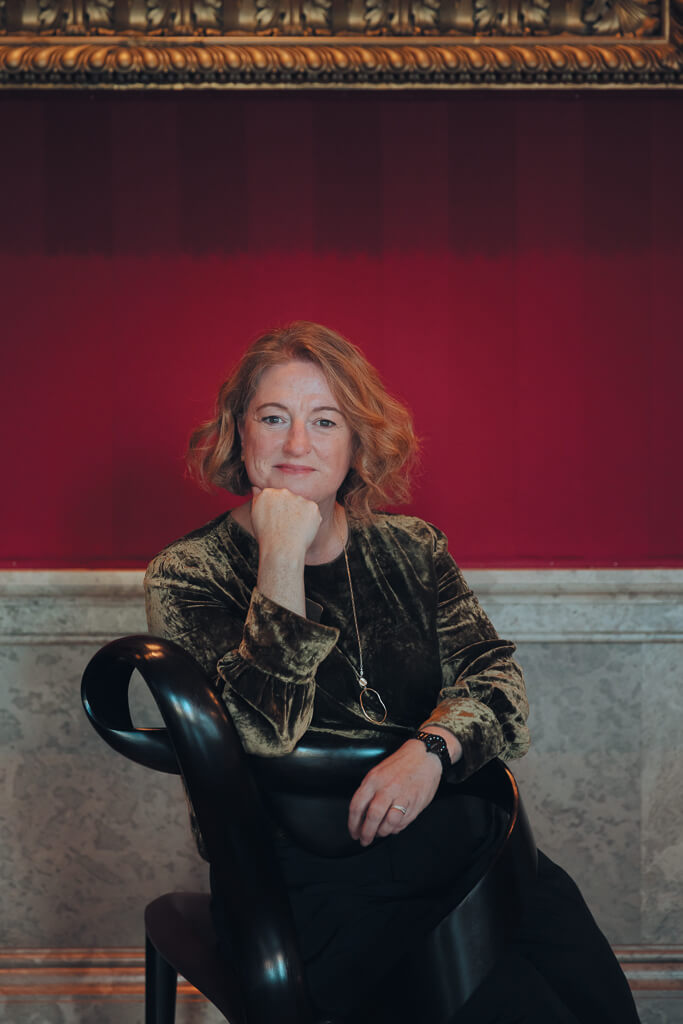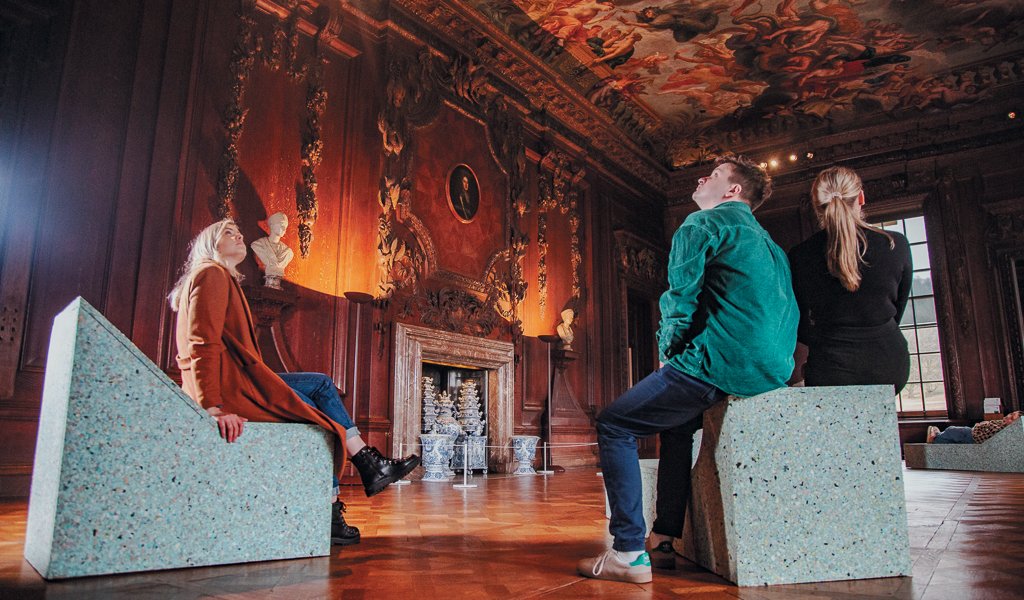Did you know that Chatsworth is run by a charity? Many people don’t – but that’s about to change. Fiona Stubbs meets the Director of Chatsworth House Trust, Jane Marriott.

JANE Marriott is in her element. Immersed in the history, art and landscape of one of the UK’s best-loved country houses, she clearly relishes her role as Director of Chatsworth House Trust.
As the Trust’s first full-time Director, she has a key role to play not only in generating income and reaching new audiences in the UK and globally… but increasing awareness that, since 1981, Chatsworth has been run and cared for by a registered charity.
It comes as a surprise to many people that the Devonshire family pays market rent to the Trust to live in the house – an arrangement made 43 years ago by the 11th Duke, Andrew Cavendish, and his wife, Deborah.
They sought to secure Chatsworth’s future by opening it to the public but recognised that cross-subsidising visitor income with agricultural rents and sales was never going to be sufficient for the upkeep and development of the house and garden, particularly in the light of death duties at the time.
The charity was formed and granted a 99-year lease of the house, including its essential contents and grounds, charged at a peppercorn rent of £1 per year.
“It allowed Chatsworth to stay open, to remain a living home and to continue to evolve,” explains Jane. “The family are supporters rather than beneficiaries. They support us in terms of gifts and donations, including works or art which may have been bought privately. But the story of how the family and the Trust work together hasn’t really been told.
“One of my priorities is to build on the understanding of our status and impact as a registered charity. An insightful piece of research revealed that very few of those surveyed knew that Chatsworth was run by a charity. Significantly, 57% were more willing to support Chatsworth House Trust once they learned it is a charity.
“We need to be more confident and comfortable about the fact we are an independent charity, with every penny raised from visitor admissions, membership and events (including the profit from the Chatsworth Country Fair and International Horse Trials) re-invested into the house, garden, park and woodlands.”
Jane’s appointment – in January 2023 – coincided with family changes at Chatsworth. The retirement of the 12th Duke and Duchess, Peregrine Cavendish and his wife Amanda, to another property on the estate ushered in a new generation as Lord and Lady Burlington and their three children made Chatsworth their home.
Lord Burlington chairs the board of trustees, which runs Chatsworth House Trust. The majority of trustees are independent and elected by due process.
Jane’s own journey to Chatsworth began with her love of art, which led to predominantly leadership roles in museums and galleries at times of major transformation.
She says: “Growing up, I was the only one in my family who was interested in art, although my parents did enjoy visiting country houses. My mum worked in a bank, my dad worked in insurance and my sister became a chartered accountant.
“The place is incredible: its reputation; the quality of its collections; its heritage.”
“But my parents were very supportive and I went on to study history of art at university. I realised early on, however, that I wasn’t talented enough to be an artist!”
Travelling in Australia after university, Jane worked as assistant curator at Art Gallery New South Wales in Sydney. She then joined the team that launched Tate Modern in London in 2000, going on to become the youngest female Director of the Royal Academy Trust and Director of Development at the Royal Academy of Arts.
Her next move took her to Yorkshire, firstly as Deputy Director, then Managing Director, of the Hepworth Wakefield, where she oversaw initiatives which helped the gallery to win the Art Fund Museum of the Year prize in 2017.
Jane went on to spend six years as Director of the Harewood House Trust in Leeds – overseeing a significant increase in charitable income and visitor engagement – before taking up her role at Chatsworth.
“Who could resist the opportunity to work here?” she smiles. “The place is incredible: its reputation; the quality of its collections; its heritage. We have 500 years of history of the Devonshire family and how they’ve shaped this place.”
She adds: “Country houses offer such a wide potential to make a positive difference to people’s lives. At Chatsworth, over 600,000 people pay to come in each year, but if you add on everyone who uses the free parkland, we’re getting close to a million visitors.
“People come to Chatsworth for many different reasons – children burning off energy in the playground, garden lovers appreciating the gardens, others enjoying our art, culture and history. And, hopefully, they all have an incredible experience.
“Chatsworth is a place of creativity and community. We have a responsibility to re-invest money for the public good – from a travel subsidy fund and new admission pricing, including a £10 child ticket which gives access to the house, garden and farmyard, to improved accessibility such as our Changing Places toilet and accessible pathways for the new playground equipment. It’s about investing in learning, through both childhood and adult life. It’s about diversity and inclusivity – and looking at how we can respond to some of the greatest challenges we all face.
“I genuinely believe in the power of culture to make a positive difference to people’s lives. I think we are going to need that more and more in a time of wars, a cost-of-living crisis and young people facing mental health challenges.
“Over the last 12 months, we’ve done a lot of research to understand who is coming to Chatsworth and who isn’t. The depth of emotional connection, loyalty and passion expressed for the place through our research is breathtaking. We have to be careful to cherish what we have, not to take anything for granted and to work hard to find different ways of telling our stories.”
There are tangible signs of change in the current exhibition, Picturing Childhood: A New Perspective at Chatsworth, which runs until October. It explores different experiences of childhood, represented in art spanning five centuries, from Tudor times to the present day.
New perspectives include paintings standing on the floor – at children’s own height – instead of hanging on walls; special seating in the Great Chamber encouraging visitors to look up at the art on the ceiling; and viewfinders depicting different artworks around the house and garden.
Artist Peter Newman’s Skystation in the Inner Court allows a new view of Chatsworth’s historic architecture, while scent artist Tasha Marks has recreated the aromas of the meal served at Queen Victoria’s first formal dinner party in the Great Dining Room when she was 13.
Designed to appeal to people of all ages and backgrounds, it’s a playful and thought-provoking approach – and a clever way to engage younger audiences growing up in a challenging digital age.
Conserving Chatsworth for future generations requires an eye-watering amount of fund-raising… with more than £30 million estimated to be needed to renovate listed structures across the estate.
A £7.5-million project has been launched to restore the much-loved Grade I-listed Cascade, which has delighted visitors for three centuries with its temple of spouts and fountains and water tumbling down 24 steps. The project has been endorsed by The National Lottery Heritage Fund, which has so far awarded £422,000 to fund research and development work.
Jane says: “The cost of looking after country houses and heritage sites is astronomical.”
Many were lost after the Second World War due to falling estate incomes, rising costs and soaring death duties, which peaked at 85 per cent in 1969.
But an exhibition in 1974 at London’s Victoria and Albert museum – The Destruction of the Country House 1875-1975 – encouraged moves to protect the remaining ones.
“After the war, the country had to invest in itself to get back on its feet and death duties were significant,” adds Jane. “In some families, the heirs didn’t even come back from the war. So, we saw a swathe of houses become schools and hotels while others went to rack and ruin. Many went to organisations such as the National Trust; while some families looked at ways to keep them open.
“Duchess Deborah and her husband, Andrew, decided that the way Chatsworth could stay open was to be a charitable trust. It means that, 40 years on, we are in this incredible situation where we have a charity of this scale that can have a strong voice in the cultural sector. Thankfully, we’ve proved these places can thrive.
“I think there’s a renaissance of the country house and that the impact we can make on a broad audience is unrivalled in this country.
“I welcome opportunities to tell our stories and we should be really proud that, in Derbyshire, we have so many amazing country houses.”
Editor’s Note: Learn more about Chatsworth House Trust at https://chatsworth.org/support-us/






